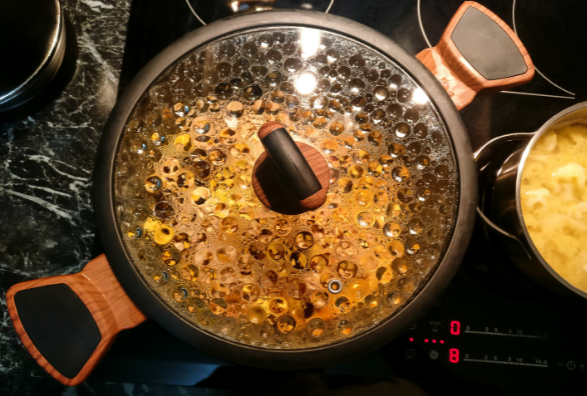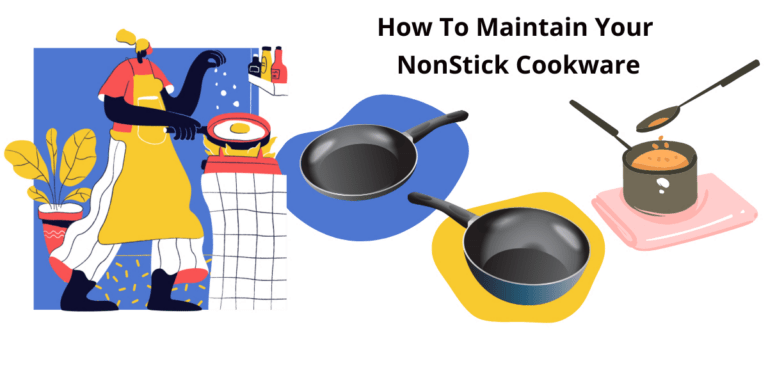Heat Resistant Glass
Are universal glass lids heat resistant?
If you’re wondering if your new tempered or ceramic glass lid will survive high temperatures, we have the answer for you.
The most important part of a lid is its ability to hold up in high-temperature environments. This makes it crucial to know what type of material your beverage container has before choosing a coffee cup with an insulation cover that matches!
What is heat resistant glass?
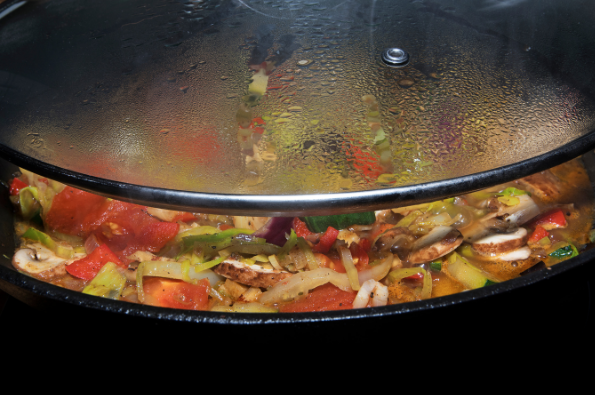
Heat resistant glass is a type of glass that has been specifically designed to withstand high temperatures. This type of glass is often used in applications with a risk of thermal shocks, such as ovens and dishwashers. Heat resistant glass has many excellent properties, including low expansion, thermal shock resistance, and high-temperature resistance.
Borosilicate glass is a type of glass often used in products requiring heat resistance, such as windows and cooktops. This type of glass has a low thermal expansion coefficient, meaning it does not expand or contract much when heated. It also has high thermal stability, meaning it does not change shape or color when heated. Additionally, borosilicate glass is very strong and can withstand high temperatures without breaking. As a result, many companies use this type of glass to manufacture heating equipment.
On the whole, glass is heat resistant. Therefore, it has many applications in various industrial sectors. Glass is often used as a cover for heating equipment, such as fireplaces and wave soldering machines. Additionally, it can be utilized in thermal power plants and metallurgical fields. Moreover, heat resisting glass is also effective in optical equipment and heat resistant lamps.
How is tempered glass made?
Heat resisting glass is made by adding certain materials to traditional glass to improve its heat resistance. The most common type of heat resisting glass is borosilicate glass, which is made by adding boron oxide to the ingredients used to make traditional soda-lime glass. This addition increases the strength of the finished product and makes it more resistant to thermal shock.
What are the benefits of using heat resisting glass?
Although heat resisting glass is not 100% break-proof, it is a great alternative to shatter-resistant glass because heat resisting glass can resist temperatures up to 800 degrees Fahrenheit. It is also more cost-effective and can withstand a wider range of temperatures.
It can withstand high temperatures
Tempered glass is heat resistant and can withstand high temperatures without breaking or cracking. This makes it an ideal material for use in kitchen appliances and other areas that may regularly be in contact with heat.
It is shatterproof
Tempered glass is a type of glass that has been treated with heat or chemicals to make it stronger than regular glass. It is often used in cookware and windows because it is shatterproof- meaning it will not break into sharp pieces if damaged. However, tempered glass is also heavier than regular glass, so it is more likely to shatter if broken.
It is durable
“Safety glass is designed to break into a diced pattern when it breaks to reduce the risk of injuries. Safety glass must have a surface of the glass that is at least 10,000 psi (891 MPa) per ASTM C 1048.”
This means that safety glass is more impact resistant than annealed glass and can withstand some bending and rapid temperature change. This makes it ideal for use in areas with a risk of breakages, such as windows or doors.
It is also heat resistant: “The glass can withstand some bending and rapid temperature change.” This means it can be used in areas with fire risks, such as kitchens or laboratories.
Overall, the benefits of using heat resisting glass are its durability and its resistance to high temperatures. This makes it an ideal choice for use in areas with a risk of breakage or fire.
It is easy to clean
It is easy to clean tempered glass protectors that sport an oleophobic coating. The oleophobic coating resists smudging, and the protector typically cleans easily with a simple, dry wipe-down with a microfiber cloth.
How can you use heat resisting glass in your home?
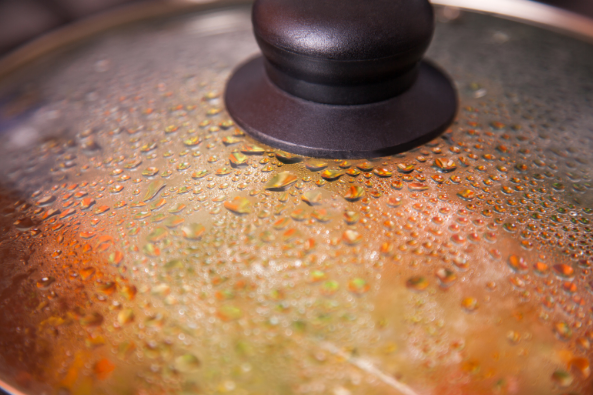
There are a few different types of heat resisting glass, but tempered glass is one of the most common. Tempered glass is less expensive and is best for lower-temperature applications. It can withstand constant temperatures of up to 470 degrees F. In addition, tempering strengthens glass by changing its breakage pattern- instead of shattering it into sharp pieces, tempered glass breaks into small circles or rectangles. This makes it much safer if it were to break. However, tempering is not recommended for applications where a fire will be near the glass as it may not be able to withstand high temperatures.
Heat resisting glass can be used in windows
Heat resisting glass is a type of glass that is designed to withstand high temperatures. It is commonly used in applications where regular glass would not be able to withstand heat, such as in thermal power plants or metallurgical fields.
There are many benefits to using heat resisting glass in windows. First, it provides superior heat resistance compared to regular glass, which can help keep your home cooler in the summer months. It also offers excellent light transmission properties, making it ideal for use in lamps and other optical equipment. Finally, heat resisting glass is also very strong and durable, making it a great choice for high-traffic areas in your home.
Heat resisting glass can be used indoors
Heat resisting glass is a type of glass that can withstand high temperatures. It is often used indoors to prevent the door from breaking during a fire.
Heat resisting glass can be used on walls
Heat resisting glass is a type of technical glass that has a strong ability to withstand thermal shock. This makes it ideal for use in walls, as it can help to protect your home from fire and heat damage. Heat resisting glass is most commonly called borosilicate glass. Borosilicate glass is popular for its low thermal expansion coefficient, high thermal stability, and high mechanical strength.
Heat resistant glass can be used on floors
Heat resistant glass is a type of glass that can withstand high temperatures without breaking. This makes it an ideal material for use on floors, as it can withstand heat from the sun or heaters without being damaged. Heat resistant glass is also used in other home areas, such as kitchenware and windows.
What is a universal glass lid?
As the name suggests, it’s an impressive lid for all your pans and pots, anything between 12 and 6 inches in diameter. Which more than likely includes your entire cookware collection.
When the capers pop out of your skillet or tomato paste is sputtering on your walls, use the lid until it dies down. When soaking beans and you need to cover the bowl, reach for the lid, not the plastic wrap. Use the universal lid when you have no idea where your stockpot lid is (or if you even have one). When you need to cover the pan for oven polenta immediately, grab the universal glass lid instead of rummaging around the kitchen.
Can a universal glass lid break from the heat?
When heated, it breaks because of thermal shock. If there is a temperature difference between the different surfaces of the glass material, the thermal inflation of one side for the other causes stress to the material. When the pressure reaches above the yield strength of the material, cracks start to develop. It is brittle, and when it develops its first crack, it shatters into pieces.
When shaping the glass, stress develops because of bending and shearing. If the glass is cooled quickly, another type of stress called thermal stress develops in the glass. Compressive stresses are what cause glass to break. Tempered glass will only break if heated up past the tempering point. This is an important consideration when designing a temperature and glass-breaking study.
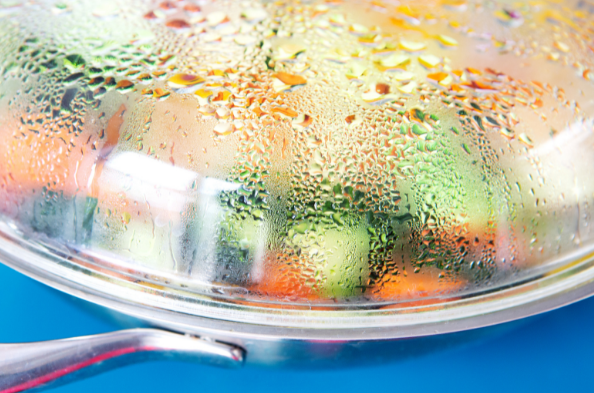
Borosilicate glassware used in laboratories can withstand higher temperatures than cooking glassware, as the temperature in labs is often higher than in kitchens. If the temperature rises above its tempering limit, any glass will break. But tempered glass will resist temperatures up to a certain point. Different tempering conditions cause other glasses to break at different temperatures. Toughened glass is used for various purposes, including glass stairs, roofs, swimming pools, walls, aquariums, and safety glass in banks and museums. Bulletproof glass is a layer of laminated tempered glass that can withstand many high-impact bullets from an automatic rifle. If the glass is heated beyond its melting point, it starts to melt and turn into liquid.
Frequently asked questions
Below are some of the most frequently asked questions about heat-resistant glass.
What will happen if you put glass in a microwave?
A type of glass that isn’t safe to use with microwaves can have small air bubbles that will swell when heated. If these bubbles grow large enough, it will cause the glass material to break.
The metal in the glass could spark and cause the glass material to shatter. Check your glass for a “microwave-safe” label before using it in the microwave.
Is it OK to microwave frozen glass?
Transferring a cold Pyrex directly from the freezer or refrigerator to the microwave may crack or even completely shatter.
Pyrex is thicker and harder glass than the material used for other kitchenware.
Why did my glass plate break in the microwave?
It doesn’t happen very often, but sometimes the microwave turntable/cooking tray breaks.
What causes a microwave plate to break? Although it doesn’t happen very often, the turntable/cooking trays sometimes break.
Will a heat gun work in melting glass?
The heating aspect of a heat gun becomes very hot when used. A heat gun operates at lower airspeeds and produces temperatures as high as 1,200° F, which is enough heat to melt different types of glass.
At what temp does glass crack?
When a windowpane or typical float glass is heated at first, it is more likely to crack when the temperature reaches 150 – 200° C.
The first crack in the pane of glass will begin at one of the edges once a crack goes through the pane. After that, however, the ventilation accessible to the fire becomes compromised.
How to prevent the glass from breaking?
We can avoid cups, teaware, and mugs from breaking by following two guidelines:
- Avoid using common glass for hot liquids; stand by ceramics or glass that you are sure to be heat resistant.
- When using ceramics or glass, avoid sudden temperature changes.
If the temperature changes from room to boiling, your ceramic pieces will be fine. However, a big change drastic enough will shatter anything.
Is glass heat resistant?
Glass is a type of material that can resist heat, meaning it will not break even when subjected to high temperatures.
Glass is a material that can be heated, but it will not remain hot. Glass heats up because of its low thermal conductivity and the transfer of heat by radiation.
Is heat-strengthened glass the same as tempered?
Tempered glass tube is a type of tempered glass that has been heated to extreme temperatures to make it three times stronger than regular glass. Heat-strengthened glass, on the other hand, refers to any glass that has been heated to a certain temperature to make it stronger than regular glass.
What is tempered glass?
Is tempered glass stronger than regular glass? Tempered glass is an extremely strong, heat resistant type of glass that has been heated and cooled many times to make it very durable. It usually has a thick layer of temper on the surface, made up of microscopic, disorganized bubbles.
Can any glass lid be used safely inside an oven?
No, some glass lids may not be safe inside an oven. The most common lid type is Pyrex, which can be used in the oven but should not be put in the microwave with food. Other glass lids may be safe to use in an oven, but it is best to double-check with the manufacturer’s instructions.
- Proper Care for Your Kitchenware: How to Maintain Your Nonstick Pan - January 30, 2022
- Everything You Need to Know About Doing Your Dorm Laundry: Laundry bag or hamper? Which dorm laundry basket should you go for? - December 20, 2021
- Home Office Storage Cabinet: A complete guide to help you find the best one for your specific needs - July 12, 2021

